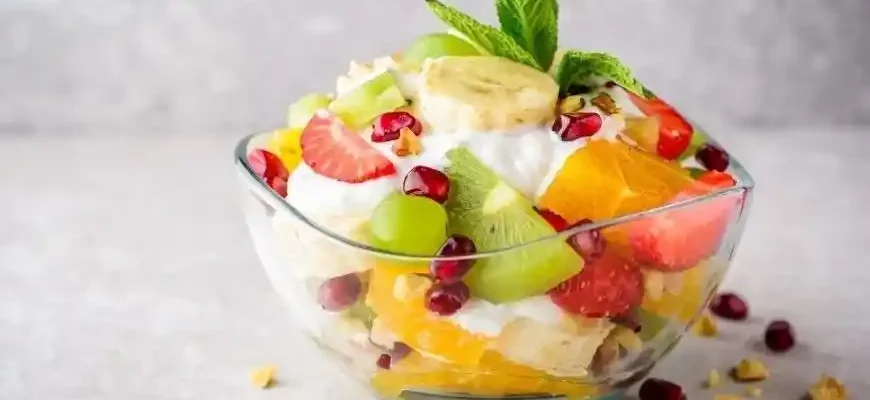Fruit salad. Simple, refreshing, and packed with vitamins. It’s the kind of dish that almost everyone can appreciate—whether as a snack, a side dish, or even a light dessert. But making a truly great fruit salad requires more than just chopping up a bunch of random fruits and tossing them together. As with many things in life, a little planning, attention to detail, and the right ingredients can make all the difference.
Let’s break it down from a variety of perspectives, bringing in decades of experience to create the perfect fruit salad that not only satisfies your taste buds but also packs a nutritious punch.
1. Why Fruit Salad is a Superfood Staple
At its core, fruit salad is all about variety. The more diverse the fruits, the more diverse the nutrients. Fruits are rich in vitamins, minerals, fiber, and antioxidants—all of which are crucial for maintaining good health. For example:
- Vitamin C: Found in citrus fruits like oranges, kiwis, and strawberries. Essential for skin health, immune function, and wound healing.
- Fiber: Present in apples, pears, and berries. Helps with digestion and can aid in lowering cholesterol.
- Potassium: Bananas and melons are rich in potassium, which helps with muscle function and regulates blood pressure.
- Antioxidants: Dark fruits like blueberries and blackberries are packed with antioxidants, helping protect the body from oxidative stress.
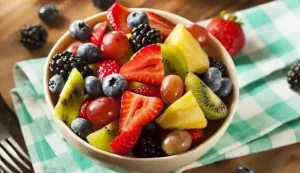
But wait, there’s more to a great fruit salad than just health benefits. It’s about balance—both in taste and texture. You don’t want to end up with a salad that’s all mushy or, on the other hand, too crunchy. Finding the right mix of flavors, textures, and colors is key to a perfect fruit salad.
2. Choosing the Right Fruits
Here’s where you can get creative. The best fruit salads are all about variety, so mix up your fruits to get a good blend of sweet, tart, and even savory. Here are some classic choices:
- Citrus Fruits: Oranges, grapefruits, lemons, limes. These bring acidity and brightness to the dish.
- Berries: Blueberries, strawberries, raspberries, blackberries. They’re sweet, tangy, and provide antioxidants.
- Tropical Fruits: Mangoes, pineapples, kiwis, papayas. These lend exotic flavors and sweetness to the salad.
- Apples & Pears: Crisp and refreshing with a mild sweetness. They also hold their shape well in a salad.
- Stone Fruits: Peaches, plums, apricots, cherries. Soft, juicy, and bursting with flavor.
- Melons: Watermelon, cantaloupe, honeydew. Hydrating and sweet, they’re perfect for summer fruit salads.
- Grapes: Small and easy to add whole. They provide sweetness and a nice bite.
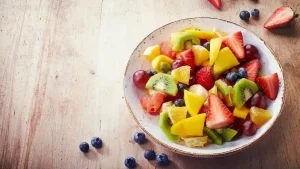
For the more adventurous types, adding some savory fruits like tomatoes (yes, they are technically fruits), or even a bit of avocado, can elevate your fruit salad into something entirely different.
3. Balancing the Flavors
Here’s the trick: balance. Fruit salads that lean too heavily on one type of fruit can be overwhelming. You want a balance of sweet, tart, and refreshing flavors. Think of your fruit salad as a little orchestra. You need the right notes to create harmony.
- Sweetness: Mangoes, bananas, apples, and grapes are your natural sweeteners.
- Tartness: Citrus fruits like lemon, lime, and berries can help cut through the sweetness and add complexity.
- Neutral flavors: Items like melons, pears, and apples act as fillers, making sure the salad doesn’t get too overpowering.
4. Texture: It’s Not Just About the Taste
A perfect fruit salad has to feel right too. There’s nothing worse than a fruit salad with too many squishy fruits that lose their texture. You need a mix of fruits that hold their shape (apples, pears, grapes) and ones that provide a bit of juiciness (watermelon, oranges). The contrast between these textures is crucial.
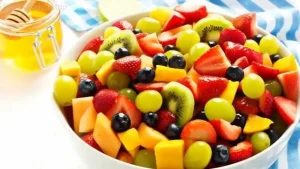
- Crunchy Fruits: Apples, pears, and grapes.
- Juicy Fruits: Watermelon, pineapple, oranges.
- Creamy Textures: Avocados, bananas, or even a dollop of Greek yogurt if you’re feeling extra indulgent.
5. Add-Ons and Enhancements
If you want to take your fruit salad to the next level, consider adding some of these optional ingredients:
- Herbs: Mint is a classic, but basil or even thyme can offer a delightful twist.
- Dressing: A drizzle of honey, a splash of lime or lemon juice, or even a dash of balsamic vinegar can brighten up the flavors.
- Nuts & Seeds: Walnuts, almonds, or chia seeds add a bit of crunch and protein.
- Cheese: A little crumbled feta or ricotta can add a creamy, salty contrast to the sweetness.
- Spices: A sprinkle of cinnamon, cardamom, or even a little chili powder can bring a whole new layer of complexity to your salad.
- Yogurt: A spoonful of Greek yogurt can make your fruit salad creamy and a bit more filling.
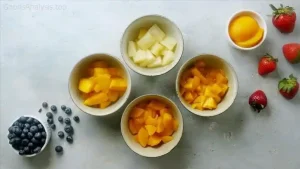
6. Assembling the Salad
Once you’ve got your fruits ready and you’re thinking about add-ons, it’s time to put everything together. Here’s a simple step-by-step process:
- Wash and Prepare Your Fruit: Make sure all fruits are thoroughly washed, peeled (if necessary), and chopped into bite-sized pieces.
- Toss the Fruit Gently: You don’t want to mash it all together. A light toss is enough to mix things up without squishing your ingredients.
- Add a Drizzle of Dressing: If you’re adding honey, lime, or other dressing ingredients, drizzle them lightly over the salad and give it one more gentle toss.
- Serve Immediately or Chill: If you’re serving the salad right away, great! If not, you can refrigerate it for a bit to allow the flavors to meld. But don’t let it sit too long, as fruits like apples and bananas can brown.
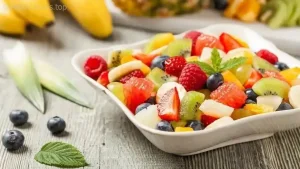
7. Potential Pitfalls & How to Avoid Them
Of course, there are a few things you want to be mindful of when making a fruit salad:
- Overmixing: It’s easy to get carried away, but overmixing can result in mushy fruit and loss of texture. Gently toss, don’t aggressively stir.
- Browning Fruit: Certain fruits like apples and bananas tend to brown after being cut. To prevent this, add a little lemon or lime juice to prevent oxidation.
- Too Much Sugar: Some fruits are already sweet enough. Adding extra sugar or syrup can make the salad too sweet and overpowering. Taste as you go.
8. Who Should Eat Fruit Salad?
Everyone! Seriously. Fruit salad is a versatile, nutritious option that’s suitable for all ages and health conditions. However, if you have dietary restrictions or medical conditions (like diabetes), you may need to be cautious about the quantity of certain high-sugar fruits, like grapes or mangoes. For these cases, focus on lower-glycemic fruits such as berries and apples.
9. Fruit Salad Opinions from Around the World
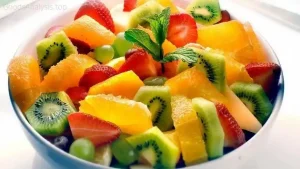
To add a more personal touch, here are a few thoughts from people around the globe:
- Juan, 45, Mexico: “I love making fruit salad with mango and pineapple. A squeeze of lime and a bit of chili powder is my secret. It’s so refreshing on a hot day.”
- Emma, 32, UK: “I prefer my fruit salad with a bit of yogurt and a drizzle of honey. It makes it more filling and a great breakfast option.”
- Liu, 58, China: “I’m not a fan of overly sweet fruit salads. I like to keep it simple—just watermelon and cantaloupe, with a touch of mint.”
- Fatima, 50, Egypt: “We always add pomegranate seeds and a bit of orange blossom water. It gives it a unique, aromatic flavor that’s a favorite in my family.”
- Omar, 60, UAE: “Fruit salad is great, but I like to add dates or figs for a bit of sweetness. It’s a wonderful combination of cultures, mixing local ingredients with global ones.”
Conclusion
There you have it—everything you need to know to create a fruit salad that’s not only delicious but also packed with nutrients. Remember, the best fruit salads are the ones that reflect your tastes, creativity, and what’s in season. Don’t be afraid to experiment, and most importantly, enjoy the process.
Happy chopping!

